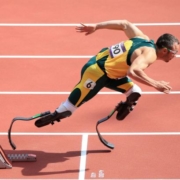Little Known Way To Optimize Bat & Ball Exit Speeds By Rotating “Under Load” (not what you think)
In today’s video, you’ll learn how to fix your flat feet…
…(insert record scratch sound effect)…
“Wait a cotton pickin’ minute, so you’re showing me a video on how to correct ‘flat feet’?! How is this suppose to help my hitters?”
…Someone somewhere might be saying 😉
The above video will be a game changer for the progress of your hitters. It may even improve bat and ball exit speeds over time. It may even fix some of the hitting faults you’re having a challenge correcting right now. The content in the above video will improve both the rotational effectiveness and efficiency of your hitters.
Strength & Conditioning Coach Naudi Aguilar understands and applies Thomas Myers’s springy fascia principles in Anatomy Trains, and that’s WHY I follow him. I highly recommend you CLICK HERE and “Subscribe” to his YouTube channel FunctionalPatterns and look into the courses on his website. He already has 183,942 YouTube subscribers!

Oscar Pistorious (the Blade Runner) won 3 Gold Medals in the 2008 Olympics. Photo courtesy: DailyMail.co.uk
He’s a locomotion expert, and by the way – he talks really fast! Here are a couple notes I took while watching the above video:
- Naudi talks about how the body doesn’t need lower leg to sprint at the highest level. Don’t believe me, CLICK HERE to watch this video of South African sprinter Oscar Pistorious who won 3 Gold Medals in the 2008 Beijing Olympic Games (about 0:45 minute mark).
- Relationship between pecs, lats, and glutes – anterior and posterior oblique slings, highly neglected part of training and carries a bigger influence on efficient movement (about 1:45 minute mark).
- Leg and knee should land as close to neutral as possible when running or walking with effective rotation. If deviation occurs, then most likely there’s a deficiency in either the anterior and/or posterior oblique slings (about 3:05 mark).
- The idea of rotating “under load”. Using feedback mechanism – the resistance band – to “feed the mistake”. Click to get WODFitters Pull Up Assist Bands
on Amazon. (about the 4:45 mark).
- Practice functional movement patterns, walking, running, or hitting while using the feedback bands (about 8:30 mark).
In Application…
About point #1 above, as most of you know, I’ve been promoting a spine driven swing for the past 4+ years. If you read Dr. Serge Gracovetsky’s book The Spinal Engine and Thomas Myers’s Anatomy Trains
, then you’ll discover that the legs aren’t necessary for locomotion, they’re an enhancement. CLICK HERE for a post on this titled, “The Swing Does Not Start From The Ground And Move Up?”
About points #2 & #3 above, some experts call this the “Serape Effect”, “Power Slings”, or Thomas Myers labels these a combination of Spiral, Functional, and Lateral fascia lines. Hitters, both young men and women, will have a deficiency here. Since a majority of hitters DO NOT take the same amount of swings and throws from the opposite side, there will be an imbalance created that MUST be addressed. Diversifying in other sports does help, but most likely, there MUST be correction.
About point #4 above, Naudi Aguilar uses a band that’s much longer than the one I use at home, so you may not need to wind it around the mid-section as much as he does in the above video. For me (I’m a right handed hitter/thrower), to correct dysfunction in rotational locomotion, I wrap my band over my left shoulder, then around my middle back, and then loop the end around my left leg. You’d do the reverse to enhance rotation for a lefty. I put this on at least 5 days per week, and wear it for about an hour while doing my morning routine. I’ve found the tightness in my right foot, Achilles, and inside part of my right knee almost vanished within 3-4 weeks of doing this.
Also, CLICK HERE to learn where I talk a little more about “feeding the mistake” using Reactive Neuromuscular Training, or RNT to correct ‘stepping in the bucket’.
About point #5 above, Naudi mentions rotating “under load”. Coaches, I’d advise having hitters experiment using the feedback bands while hitting, and recommend they wear it at home too, as a recovery tool.
These bands are a great way to counter-balance the imbalanced movements baseball and softball inherently promote. If your hitters move better, they’re perform better. Swinging smarter by moving better.


